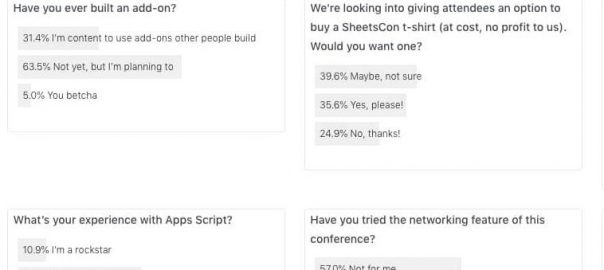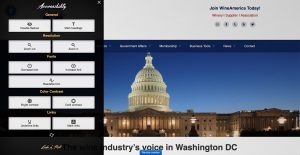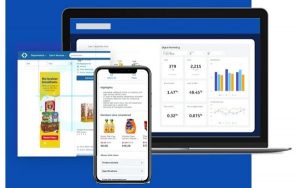Even before COVID-19 drastically changed how we connected, virtual events were on the rise. Companies and brands may have different reasons to host a virtual event, but there are two overarching benefits:
- Virtual events take less of a budget to host.
- Virtual events are more accessible.
Involving more people and spending less money sounds great, right? But it doesn’t make hosting engaging virtual events easier than hosting live events. Just like hosting an in-person event, you need to consider how the right platform and message work together. Plus, you need to strategically plan ways to increase engagement and accomplish the event’s primary and secondary goals.

In this post, we’re going to cover six tips on hosting engaging virtual events:
- Understand the goal of your virtual events
- Promote your virtual events
- Incentivize event attendance
- Be prepared for tech issues
- Promote the event during the event
- Get feedback from attendees
But first, let’s make sure we’re on the same page.
What counts as a virtual event?
A virtual event is an online event that uses a platform where participants (or hosts) can interact with attendees or an audience.
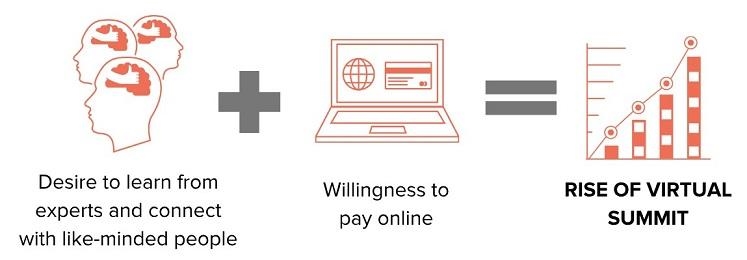
That means a virtual event can be a webinar, a behind-the-scenes tour of your brand, a conference, or anything else that connects participants over a virtual medium. It can be as simple as live-tweeting a product reveal, or as complex as hosting a multi-person webinar panel with a Q&A.
When it comes to hosting virtual events, some events work better than others.
- Conferences. A virtual conference is an interactive virtual event that should usually have unique, downloadable content for its attendees. These are generally paid events, and virtual conferences are becoming more and more popular due to the size and the cost of traveling.
- Training, workshops, and courses. These are virtual “hands-on” events. You may be making downloadable content, like a marketing course for your business or agency. So it may be live or recorded and re-sold. Either way, it’s generally a paid event, and it’s expected that the attendee will be doing work in tandem with the course.
- Webinars. Webinars are generally more intimate than conferences, where it’s expected that a virtual attendee can interact with the speakers or presenters.
- Tours. Tours can be either informal or formal virtual events where you’re giving your audience a view behind-the-scenes of production. Ahrefs did a virtual tour of their Singapore office and posted it on YouTube. These are generally free events.
- Virtual meetups. The most informal virtual event on our list, these are great for remote businesses (or businesses working from home) who want to engage and interact with their team. These are free, laid back events.
- Fireside chats. Popular within the startup community, a fireside chat, as the name implies, is a more relaxed virtual event between a few peers. These are generally free events.
There are more types of virtual events than this, but these are the more common types of virtual events that we see people holding.
6 tips for hosting engaging virtual events
Like I said earlier, hosting a virtual event may cost less and be open to more people, but it still takes planning in order to be effective, just like a live event. Here are six tips to make sure your next virtual event is your best yet.
1. Understand the goal of your virtual events
When planning your virtual event, you want to match the medium to your goal. Don’t just pick a free virtual event platform because it saves you money or is popular.
For example, if your goal is to get your remote team to have some face-to-face time, you’re looking at a virtual meetup, which can happen over a common tool like Zoom. Or maybe your goal is to demo your new product or service to your ideal customer base. That goal involves more steps to pull off correctly, including having an event page, targeted PPC campaigns, and email marketing efforts.
To understand the goal of your event, brainstorm your ideal virtual audience:
- Are you looking for an audience of your peers?
- Are you looking for an audience of your existing customers or new customers?
- Are you looking for an audience of people who want to participate in the event, or simply observe?
Once you’re able to define the goal, you’re ready for step two, which handles the promotion of your virtual event.
2. Promote your virtual events
Using your existing marketing network is going to help you increase the number of virtual attendees who show up and participate in your event.
A virtual event is like any other product or service your business has offered in the past—it needs to be marketed towards your target audience.
Step #1: Look within your existing network
Share the event with employees, partners, and social media influencers who can help you co-run or promote the event.

Step #2: Use content marketing to increase virtual event sign-ups
If your blog has subscribers, then publishing a blog post about the event is a great way to increase attendance. Plus, if you’re able to play your event in advance, you can adjust your content schedule to post articles that are about topics that will be relevant during the actual event.
Step #3: Talk about the event on your podcast
Podcasts are a great way to reach your audience without competing for attention. With email blasts and PPC ads, you’re always one of many. But with a podcast mention, you have your customer’s attention.
Step #4: Run ads
Using demographic targeting in Google Ads and lookalike audiences in Facebook ads make it easy for your business to run targeted ads towards bottom-of-the-funnel prospects. But remember, you need to try this ad like any other ad. It needs compelling copy, excellent visuals, and a clear CTA (such as register for this virtual event!).
Step #5: Create a virtual event landing page
Your podcast, content marketing, and PPC strategies are all about getting your customer to your virtual event landing page. This is where they can make the decision to register for your event.
Note: You want to promote any event to get attendees, but the more informal the event, the less work you need to do to promote it.
For example, if you’re only running an Instagram story, you don’t need a virtual event landing page or (most likely) a PPC strategy. Instead, you’ll leverage your Instagram network to attract attendees. Below is an example of an organic social media post that promotes an upcoming event.
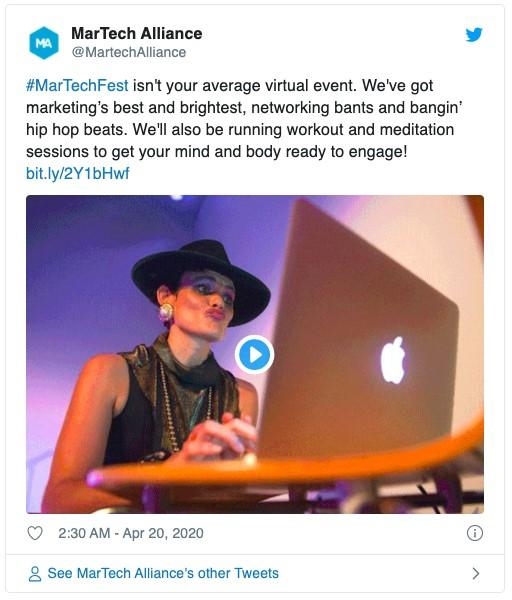
What makes this post great:
- It gives us a hashtag. Hashtags let your attendees post about the event and connect with other attendees. And Instagram hashtags also help create a virtual event within a virtual event. People who were interested in your event but couldn’t make it can now learn about the event by reading what attendees have posted.
- There’s a link to the event landing page. We give this link a B+. We would have preferred if it were positioned as a more clear CTA, with copy directing the user to take action.
- Video marketing. Video ads are a great way to slow down fast-scrollers who are steamrolling through their feed. Plus, if you have video marketing that shows users footage from your last event, that makes great material for a virtual event ad.
3. Incentivize event attendance
Ask yourself why someone should attend your event, and don’t let the answer be “because we’re awesome.”
There are several ways to incentivize event attendance, from offering free swag (see below) to teasing the kind of value-driven information that the event will cover.

How much you need to incentivize will depend on whether your event is free or if there’s an admission fee.
If it’s a free event, leverage the event itself as the incentive.
For example, if you’re hosting a workshop for small businesses on how to set up their Google Analytics account, then the incentive is the information you’re going to cover within the event.
The ad copy or blog copy for that event would be something like this: “Calling all small business owners. Join us this Friday on Instagram Live, where we show you how to set up a Google Analytics and Google Search Console account for your ecommerce site.”
If attendance costs anything, we recommend you create some materials that are unique to the event.
This could be as simple as a PDF guide or ebook that the attendees download after registering. If you’re using the event to sell a product or service, you can also offer a coupon code or extended free trial for all virtual event attendees.
4. Be prepared for tech issues
One of the more popular virtual event fails was the Mayweather and McGregor Live Stream fail. The boxing event was billed as one of the major sporting events of the decade, but the event didn’t go as planned. Attendees had registered for the event, paid for the event, prepared for the event, but when the night of the event came, the live stream failed due to tech issues.
When you’re planning your event, have some contingency plans in place.
What will you do if …
- Your live stream fails? Depending on the severity of the issue, you can have backup dates to reschedule or a backup platform ready-to-go.
- Your guest speaker doesn’t show? Whether this is a big issue or a minor one, depends on the type of event. If it’s a fireside chat and one of the chatters doesn’t show up, that’s a problem. If your guest speaker wasn’t the main attraction, it’s possible to recoup by having the event host cover the material the guest speaker was going to cover.
- You get more (or less) participants than expected? With adequate preparation, this issue can quickly become a non-issue. We recommend having multiple plans for the event. If more participants than expected arrive, just adjust your plans to be less detailed, so as to allow for more of a Q/A. If fewer participants than expected show up, re-adjust your strategy to create a more intimate virtual event.
5. Promote the event during the event
Social media is your friend before the event, as well as during the event.
You can use hashtags on Twitter to encourage your attendees to live-tweet the event. Live-tweeting is a great way to increase engagement. Plus, it’s free publicity, as the message of your event goes out to new audiences.
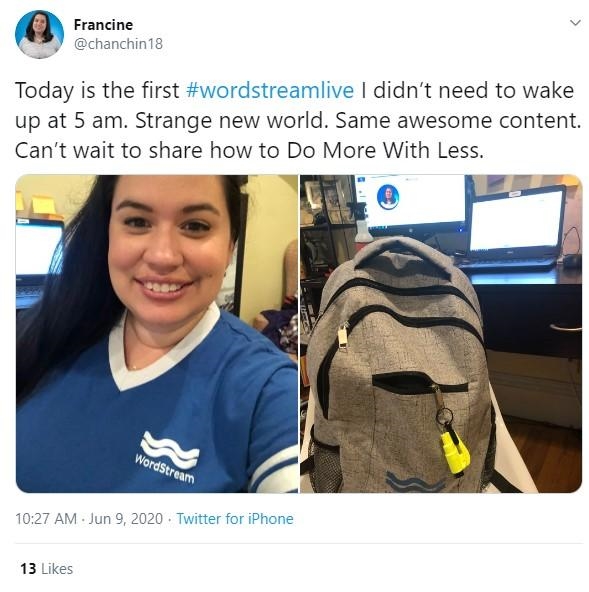
It’s worth mentioning that live-tweeting should be encouraged during paid events. An attendee isn’t going to be able to cover your entire event, which means that they will be promoting just enough information to get their followers interested in your brand/service.
6. Get feedback from attendees
Always be thinking ahead.
To help you plan your next event and to help you determine if this virtual event or the event platform you chose worked for your audience, you need to follow up with each participant.
This can be as simple as an email follow up a day or two after the event is over, but don’t wait too long, as you want their feedback when it’s fresh and clear in their mind.
In fact, you don’t even have to wait at all. For example, SheetsCon—a virtual conference about Google Sheets—polled its attendees throughout the event. This was the first-ever SheetsCon event, and they knew feedback was critical.
By polling throughout the event, they were able to gauge their attendees’ experience of the event and mine important data for their next event.
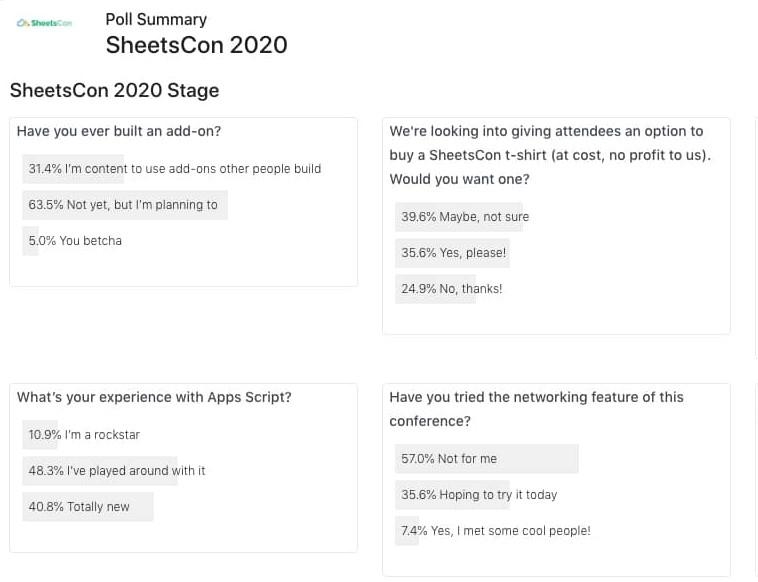
However you get feedback from your attendees, make sure to review it and make your next virtual event even better.
Host engaging virtual events
Virtual events have benefits for the event organizers (less upfront cost, a higher rate of attendance), and for the participants (easy to work around your schedule, lighter on your wallet, higher engagement between you and the presenters).
Whether it’s as recurring as a weekly virtual meeting or if it’s a larger virtual conference, the first step is understanding the goal of the event and the target audience. From there, follow our tips on how to host a virtual event that’s great for your business and offers clear value to attendees.
Business & Finance Articles on Business 2 Community
(63)
Report Post